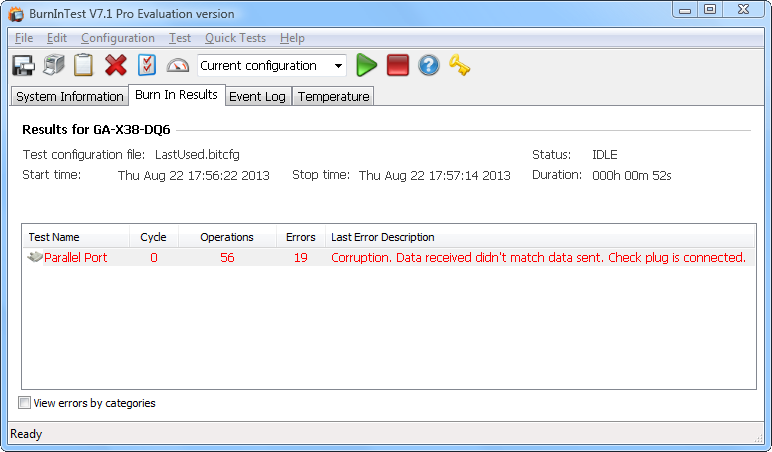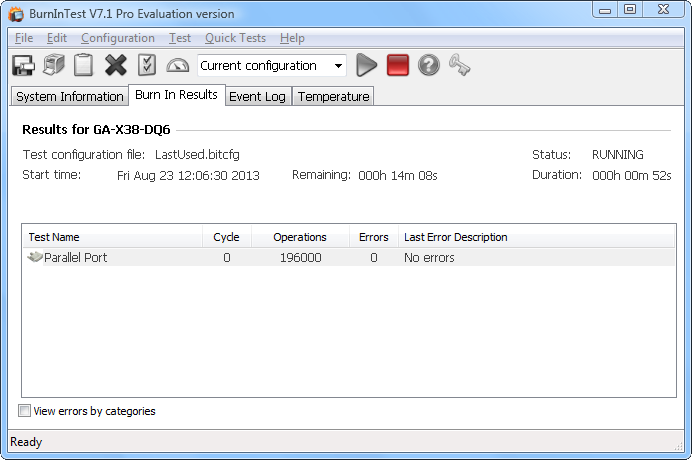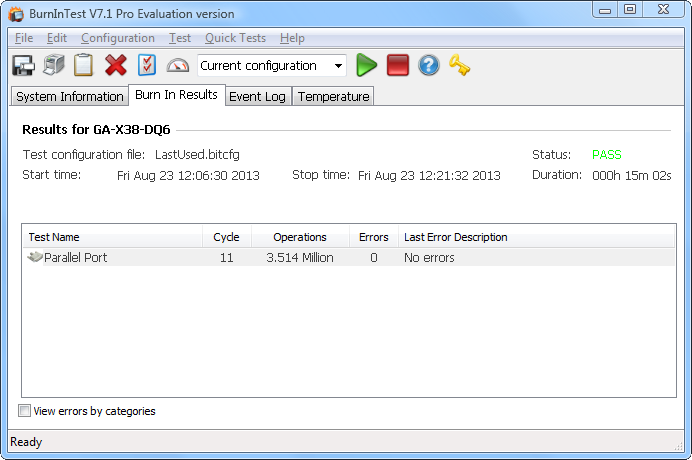I have connected pin 2 to pin 3, pin 4 to pin 5, and pin 6 to pin 20.
Can someone please tell me if this is the correct wiring for loopback testing a parallel port?
Ia am using BurnInTest 7.1 Pro by PassMark Software for the test. Is this the right software for this job? This is the error I receive.
Corruption. Data received didn't match data sent. Check plug is connected.

The image above shows the program window 52 seconds into the test.

The image above shows the status window 1 minute and 47 seconds into the test.
As you can tell by the images posted above, there is something wrong. How is it possible to send 40 bytes and recieve 80 bytes? I mean how can you receive twice as much as you send? This makes no sense to me. Does it make sense to you? You can see that the number of errors shown in this window is 39, which is more or less the same amount redundant data that was received.
80-40=40≈39
Can I trust these results? I have used the same program to loopback test a serial port and it did, and after 15 minutes of testing it gave me a big "PASSED" message in green letter. So I know it works for serial port testing. But does that make it trustworthy/reliable for parallal port testing?
Update
A DB25 connector can be used either for parallel communication or for serial communication. A DE9 connector can only be used for serial communciation. My mistake here was that I wired a DB25 connector for serial communication, instead of parallel. After rewiring the loopback test passed flawlessly.
See the answer below for the proper wiring of a DB25 for parallel communication.
Here are some images that show the same test being done with the proper parallel wiring. I have taken these screenshots with respect to the elapsed time of the previous ones, so you can compare them.

Main program window, 52 seconds into the test.

The status window, 1 minute and 47 seconds into the test.
Passing the test...

The test result window.

Main program window showing test duration, number of cycles, operations and result.
The DB25 connector...
Here's a picture of the connector. It's a female connector. This made jumpering harder for me.

I didn't have a proper, insulated wire with the right size. So I used a 1.0 mm diameter brass wire instead. It's a good thing it's sturdy and yet soft enough for easy bending. I made sure not to touch any adjecent conductor. It's hard to find electrical wire with the diameter of 1 mm, they are rare. This 1 mm was a perfect fit. It can be slightly thicker, but not less than that. You can use a paper clip, a.k.a. "paper clip test", but it's a bit sturdier (thicker) and hard to work with.

